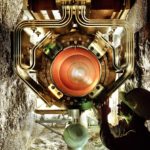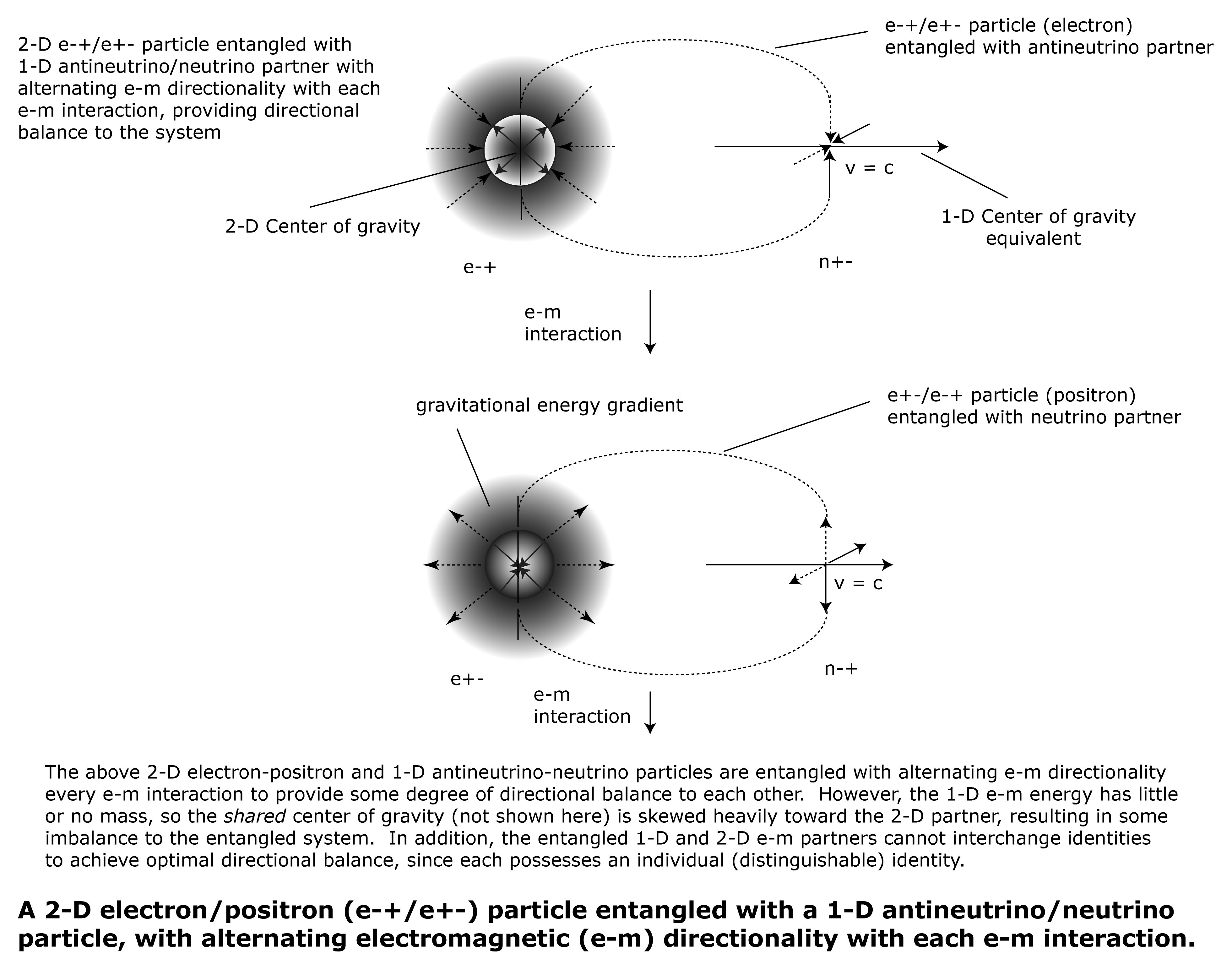NOTE: This page is being reviewed and edited (6-11-21). Thanks for your patience.
The neutrino is composed of a higher energy level structure than that of the photons of which it is made. The neutrino consists of two 1-D photons “sitting” on top of each other. The 1-D electric component of photon A is perpendicular to the 1-D electric component of photon B. The 1-D magnetic component of photon A is perpendicular to the 1-D magnetic component of photon B. The two photons undergo electromagnetic interactions simultaneously, composing a neutrino.
A neutrino or antineutrino cannot exist unless it is entangled with a 1-D or 2-D partner. All entangled particles alternate e-m directionality opposing that of their partners. For example, a neutrino/antineutrino may be entangled with an antineutrino/neutrino so that each alternates e-m directionality with each e-m interaction, but with opposing e-m directionality. In similar fashion, an antineutrino/neutrino particle may be entangled with a 2-D electron/positron particle.
When an entangled partner interacts with an outside energy system, such as another identical, but opposing particle, or with a “measurement” that changes its rate of e-m interaction, it may become disentangled from its original partner.
When a neutrino/antineutrino particle becomes disentangled from its partner, one of two events happen. It either…
1) immediately becomes entangled with another partner, or
2) converts to two lower energy structure photons possessing equal and opposing e-m directionalities (an entangled photon pair).

